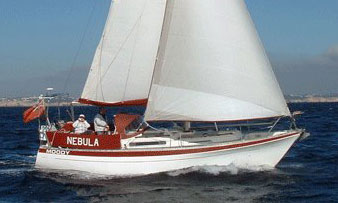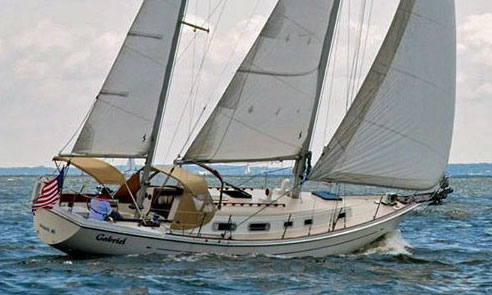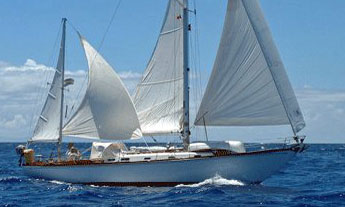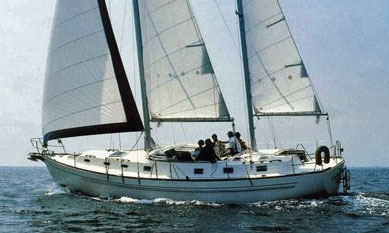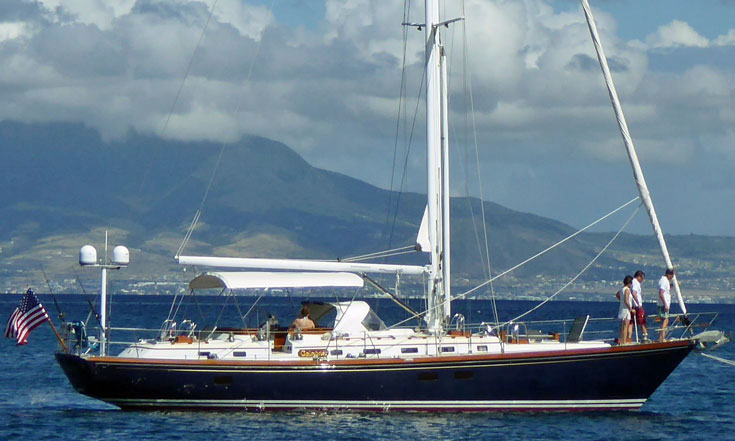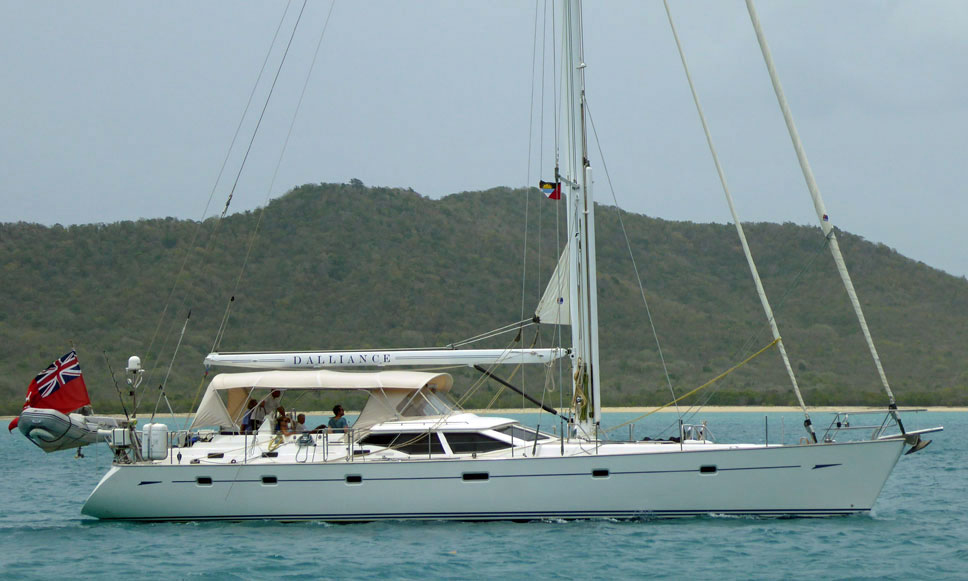- Home
- Cruising Yachts 30' to 35'
- Bavaria 31 Cruiser
The Bavaria 31 Cruiser Sailboat
Specs & Key Performance Indicators
The Bavaria 31 Cruiser sailboat was designed by J&J Design and manufactured by Bavaria Yachts in Germany throughout the years 2007 to 2014.
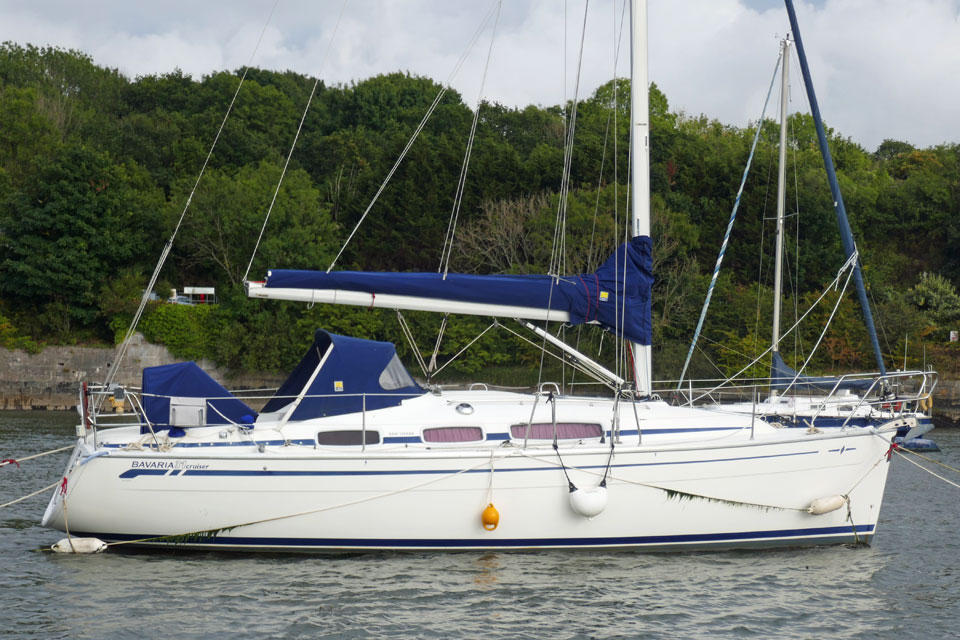 Bavaria 31 Cruiser
Bavaria 31 CruiserPublished Specification for the Bavaria 31 Cruiser
- Keel & Rudder Configuration: Fin keel with bulb and spade rudder
- Hull Material: Fibreglass (GRP)
- Length Overall*: 9.77 m (32'1")
- Waterline Length*: 8.33 m (27'4")
- Beam*: 3.38 m (11'1")
- Draft*: 1.87 m (6'2")
- Rig Type: Fractional Sloop
- Displacement*: 4,690 kg (10,340 lbs)
- Ballast*: 1,098 kg (2,420 lbs)
- Sail Area (main plus 100% foretriangle)*: 51.38 m² (553 ft²)
- Water Tank Capacity: 155 litres (41 gallons)
- Fuel Tank Capacity: 90 litres (22 gallons)
- Hull Speed: 7.01 knots
- Designer: J&J Design
- Builder: Bavaria Yachts
- Year First Built: 2007
- Year Last Built: 2014
- Number Built: Information on the exact number built is not readily available.
* Used to derive the design ratios referred to later in this article - here's how they're calculated...
Options & Alternatives
Design Options:
The Bavaria 31 Cruiser primarily offered a fractional sloop rig. Buyers had options regarding draft, with both a standard deep draft (around 1.87 m or 6'2") and a shoal draft version available. The interior typically featured a 2-cabin layout with a saloon that could provide additional berths, accommodating up to 6 people, and included one head. The interior design prioritised brightness and efficient use of space, with an enlarged head and more storage compared to previous models.
Later Versions:
The Bavaria 31 Cruiser (2007-2014) itself was a distinct and updated model, building on earlier Bavaria 31/30 designs. Key enhancements in this "new" Bavaria 31 Cruiser included an electrically lowerable transom platform, improved ventilation with more opening windows and hatches, a larger head with increased storage, longer cockpit seats, a larger cockpit table with an integrated cooler, and a German mainsheet system with six winches in the cockpit. Lines were also led below deck. Bavaria has continued to evolve its Cruiser line with newer designs and models, such as the Bavaria 32 which replaced an earlier Bavaria 31.
Sail Areas & Rig Dimensions
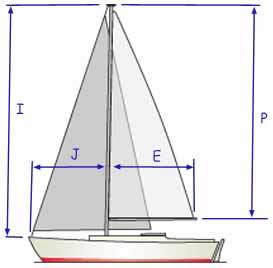 Sail Areas & Rig Dimensions
Sail Areas & Rig DimensionsThe total sail area (main plus 100% foretriangle) for the Bavaria 31 Cruiser is 51.38 m² (553 ft²) as previously stated. However, the specific individual sail areas for the mainsail and genoa are not explicitly detailed in available information.
The specific rig dimensions I, J, P, and E for the Bavaria 31 Cruiser are not explicitly provided in the available data.
Published Design Ratios
The Key Performance Indicators (KPIs)
The published design ratios for the Bavaria 31 Cruiser are:
- Sail Area / Displacement (SA/D): 18.71
- Ballast / Displacement (B/D): 23.40%
- Displacement / Length (D/L): 226.13
- Comfort Ratio: 22.58
- Capsize Screening Formula (CSF): 2.04
Theoretical Sailing Characteristics
Based on its design ratios, the Bavaria 31 Cruiser exhibits the following theoretical sailing characteristics:
- Sail Area / Displacement (SA/D = 18.71): This ratio suggests the Bavaria 31 Cruiser is a moderate performer or light cruiser. It should offer reasonable performance in light to moderate winds, being responsive and capable of decent speeds. It's not designed as a high-performance racer, but it's far from sluggish.
- Ballast / Displacement (B/D = 23.40%): This relatively low ballast ratio suggests the Bavaria 31 Cruiser might be reasonably stable initially but could have lower righting capability if capsized. This implies it may heel more readily than boats with higher ballast ratios, but within acceptable limits for a cruising vessel.
- Displacement / Length (D/L = 226.13): Falling into the moderate displacement category, this ratio indicates the Bavaria 31 Cruiser is neither exceptionally heavy nor exceptionally light for its length. It contributes to its "moderate performer" designation, balancing cargo-carrying capacity with speed.
- Comfort Ratio (22.58): A ratio of 22.58 suggests a comfortable ride in a seaway. Values in the 20-30 range are generally considered suitable for coastal cruising and moderate offshore conditions, implying the boat will likely be relatively smooth in choppy waters.
- Capsize Screening Formula (CSF = 2.04): A CSF of 2.04 is slightly above the commonly cited threshold of 2.0 for offshore boats, suggesting a relatively lower resistance to capsize in extreme conditions compared to vessels designed for very heavy weather. However, for a coastal cruiser, which the Bavaria 31 Cruiser is, this value is generally acceptable. It's important to remember this is a screening formula, not a definitive stability assessment.
In summary, the design ratios suggest the Bavaria 31 Cruiser is a well-rounded coastal cruiser. It has a moderate displacement, offering a good balance of speed and comfort. Its sail area to displacement ratio indicates reasonable performance, particularly in lighter airs. The ballast ratio suggests it will heel but should be stable for its intended use, though its capsize screening formula indicates it's best suited for coastal rather than extreme offshore conditions.
But the Design Ratios Don't Tell the Whole Story...
While design ratios offer a convenient and quick way to get a general idea of a sailboat's characteristics, they have several significant limitations:
- Simplification of Complex Hydrodynamics: Ratios reduce a complex hull and rig design to a few simple numbers. They don't account for the intricate interactions between hull shape, keel and rudder profiles, displacement distribution, or how these factors change with heel and speed.
- Ignores Dynamic Performance: Ratios are static calculations. They don't describe how a boat performs dynamically—how it accelerates, responds to rudder input, handles in waves, or its motion characteristics (pitch, roll, yaw). For instance, the Comfort Ratio is a very rough estimate and doesn't fully capture complex motions in real-world sea states.
- Does Not Account for Rig Efficiency and Aerodynamics: The Sail Area/Displacement ratio uses a basic calculation of sail area. It doesn't consider the efficiency of the sail plan, the aspect ratio of sails, their shape, or the aerodynamic interaction between them.
- Limited Stability Information: The Ballast/Displacement ratio only indicates the proportion of weight in the keel, not its depth or where the weight is located. The Capsize Screening Formula is a very basic indicator and doesn't replace a full stability curve or account for factors like cabin trunk volume.
- Ignores Construction and Build Quality: Ratios tell you nothing about the quality of construction, hull stiffness, rigging strength, or interior finish—all of which significantly impact a boat's longevity and feel.
- Doesn't Reflect Interior Volume or Practicality: Ratios are performance-oriented and offer no insight into interior space, layout, or practical cruising aspects like storage and tankage.
- Proprietary Design Elements: Many modern designs incorporate unique features (e.g., chines, twin rudders) that significantly impact performance but aren't captured by simple ratios.
- Context-Dependent Interpretation: "Ideal" ratio values vary depending on the boat's intended use. Without understanding the design's purpose, interpreting ratios can be misleading.
- No Indication of Handling Characteristics: Ratios don't convey how easy a boat is to sail, its helm balance, or how well it tacks and gybes.
In conclusion, while design ratios are a useful starting point for comparing sailboats, they are a highly simplified representation of a boat's complex behaviour. They should always be complemented by detailed design specifications, performance data, sea trials, and expert reviews for a comprehensive understanding.
More Specs & Key Performance Indicators for Popular Cruising Boats
Recent Articles
-
Planning Your Sailboat Liveaboard Lifestyle: An Ocean Sailor's Guide
Dec 06, 25 05:18 AM
Seasoned sailors share their methodical risk analysis for planning a secure Sailboat Liveaboard Lifestyle, covering financial, property, and relationship risks. -
Marine Cabin Heaters: The Expert’s Guide to Comfort & Safety at Sea
Dec 05, 25 06:52 AM
Choose the best Marine Cabin Heaters for your vessel. Expert advice on diesel, paraffin, and hot water systems for year-round cruising comfort. -
Marine Water Heating Systems: Free Hot Water from Your Boat's Engine
Dec 03, 25 05:06 PM
Tap into your engine's heat to get free hot water on board. An experienced ocean sailor's guide to marine water heating systems, calorifiers & safety.

